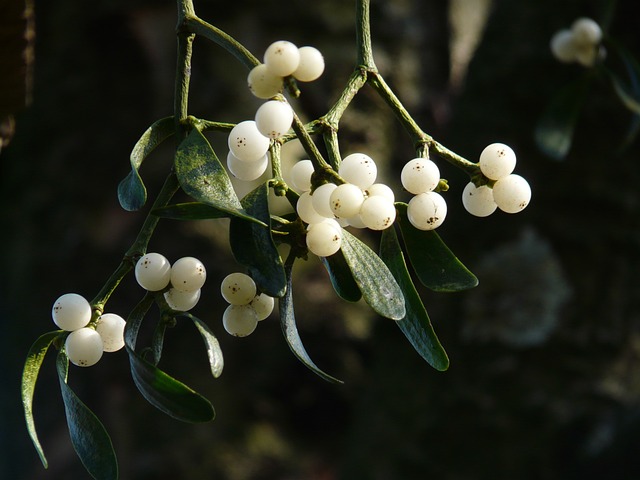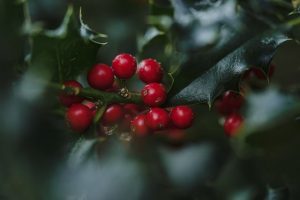Celebrating Yule Pagan Style

Like many of us Pagans, my family is composed of both Pagans and, please forgive the term… Muggles.
It is actually very rarely discussed openly, this extra stress over the holidays when people have different religious views, traditions and practices. How do we combine all without overload or conflict? You hear about Muslim and Jewish ‘mixed’ families but seldom do we Pagans get a mention or any sympathy. So how do we navigate this minefield of emotions and feelings? Below are some of my coping strategies.
Well, for one, it is a good thing the Christmas Tree has caught on by most as a part of the celebrations although many people still don’t remember that this tradition was actually originally a Pagan tradition, brought back to England in 1852 by Victoria’s husband Prince Albert.
Decorating the house with holly and mistletoe, also a Pagan tradition.
Drinking beer and mead, and feasting with loved ones: also Pagan. It is beginning to look up, my Pagan friends, so far so good.
Christians like the English ruler Cromwell even forbade Christmas but thankfully that didn’t last long.
Return of the Sun/Son
The whole idea of celebrating the return of the Sun, later changed into the return of the Son, is probably a very old one. At the Winter Solstice, 21st of December, the sun seems to stand still, not moving, and our ancient Ancestors may have been praying, conducting ceremonies and rituals of gratitude to bring back the sun’s movement. All at once, three days later, the sun is moving again, the magic worked. It gave our ancestors a sense of control. A sense that there were powers who listened and took notice of their needs and wishes.

Modern people often think that those who came before us were primitive and knew little. Seeing some of the art in the caves in Europe shows us how advanced the ancient peoples really were. Seeing the paintings of the constellations, the drawings of Shamans performing their healing dances, and the keeping of history as they described their journeys through the cycles of life is still impressive even in these advanced times.
At the time of the Solstice, the great celebration was to entice the sun to return and grow stronger so the first plants would be able to grow and help the tribe survive. Great bonfires would be built at the top of the hills to mirror the rising and warming of the sun.
At Stonehenge these days we celebrate both the Summer and Winter Solstice as equally important, however, many archaeologists now see evidence in the placing of the stones that suggests the Winter Solstice was the celebration of more importance to our ancestors. We see similar evidence at Bryn Celli Du on Anglesey and West Kennet Long Barrow. All of these are Winter Temples, and the tribes would unite there to pledge a peaceful coexistence.
Those who were unable to journey to these great outdoor temples would remain at home and gather around the communal hearth fire in the village longhouse, exchange tokens of esteem as would those who travelled abroad, they would bring food to share, community together in harmony and unity. The message, whether from the Christ child or the Sun God Belial was that living in sacred union would benefit all tribal members, no one is an island. Interestingly, in the bible the God Belial becomes the enemy of light and is denied as being evil.
The community would sing together, tell stories, recite the history of the tribe, sing (literally) the poem songs in praise of great leaders. Everyone was welcome and visitors would be treated like royalty.
Yule Rituals Now
In our own homes these days we begin the celebration, like the Celts, at sundown on Solstice night which may be the 20th or the 21st of December. This year Solstice is at 21.47 on the 21st of December, incidentally my Grandfather’s birthday.
We can drum down the sun, light a fire, although I doubt anyone Is hardy enough to keep it going all night like our forebears. I have done it once in Wales and nearly lost my feet. We can sing, drum, honour the night and invoke Goddess to bring back the sun in the morning. Fire-warmed cider, using a fire poker heated by the fire and then dunked into the cup holding the cider, is a welcome refreshment. I have seen this done for the first time when I was a child with my Grandfather, who was a Cale, a Spanish Gypsy. Later in America where it was done by our hosts in Washington. Fire poker cider can be both non alcoholic, which I found out in the US to my disgust, and alcoholic. Virgin cider was probably better when I was small, but as a grown up in thigh-high snow, a hot toddy is a welcome thing. Certainly our ancestors would be feasting with hot beer (like Harry Potter’s butter beer only with animal lard, usually deer) and hot mead. I would prefer the mead without lard. It did keep them warm though.
It was then customary to gift the Goddess/Gods/God a small token of one’s appreciation to bring about a favourable progress in the next year. This eventually became the gift giving we all know.
If you wish to honour the Gods, there is nothing more appropriate than pouring a libation from a special chalice (preferably not your own glass no matter how often you have seen people do that), and crumbling some freshly baked bread. A cut apple and some nuts are also really good as offerings. Place them on a special plate, hold your sending (dominant) hand over them, bless them with your gratitude and send your love for the divine and the world into both libation and food offering. Remember, you are a magical being and even Gods need a blessing once in a while.
Then pour the liquid in a sacred careful way onto the earth in your sacred circle and place the food in a safe location so no one slips on it as it gets icy.
Another way to celebrate the food and drink is by offering it to each of the people present, with the words:” may you never thirst” and “may you never hunger” after you have fed the Gods. The participants answer with “blessed be”.
Once the Gods have been fed and you have shared the blessed items, it is time to thank the deities for all you have received and ask them to bless you for the following year. You can either keep it general or mention something that lies in your heart that you wish to manifest. You can offer a prayer to activate the manifestation.
After this I love lighting torches all around the sacred circle in which we sit, (I have a set of garden torches from the summer) or let off fireworks, or light sparklers. The neighbours with animals will thank you for using non noisy items and your consideration. You can dance like maniacs in a circle, stomping your feet to wake the earth, and keep your toes warm, or you can return to the house to continue the celebrations there. Close the circle and adjourn.
In the morning you can get up at dawn and drum the sun back up. I do this by myself nowadays, after years of travelling to Stonehenge or walking up the Tor. Too many people around. I like to worship in sacredness and not be bothered by people taking my photo or ploughing into me in a drunken drugged-up stupor. Nowadays the Tor top is covered in trash from the wild parties held there at night, seeing that desecration breaks my heart and spoils my devotional enjoyment, so best stay home.
After the sun rises, hot cacao and bed for me. Snuggle down and dream of the new cycle.
Many blessings of the Yule
May your sun ever rise and may the warmth return to your breath.
So mote it be
Bee
Bee Helygen
Adoratrix of Cerridwen
Priestess of the Llwyth
Avalon

Website: cerridwen.co.uk
Bee is the creatrix and course tutor for the Priestess of Cerridwen training which has been running as part of the Glastonbury Goddess Temple since 2015. She also runs the Death Priestess training and is a celebrant and Avalon Soul Healer. Full bio

